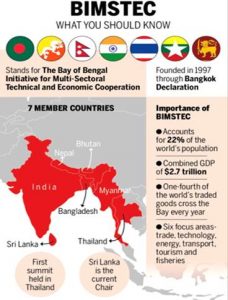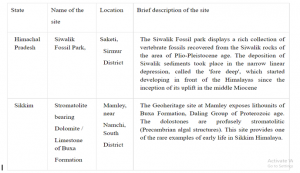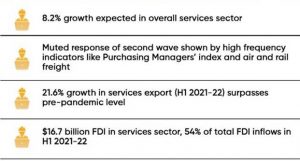DAILY CURRENT AFFAIRS (MARCH 31, 2022)
THE ART, CULTURE AND HERITAGE
1. EXPLAINED: WHAT WERE THE BAMIYAN BUDDHAS, AND WHY DID THE TALIBAN DESTROY THEM?
THE CONTEXT: The Taliban regime in Afghanistan has said it would protect the ancient Buddha statues in MesAynak, also the site of a copper mine where the Taliban are hoping for Chinese investment.
THE EXPLANATION:
- The Taliban’s position is in marked contrast to the time they ruled Afghanistan earlier, when, in the face of global outrage, they brought down the centuries-old Buddha statues in Bamiyan using artillery, explosives, and rockets.
- The apparent change of heart over the MesAynak statues seems to be driven by economic interests, with the regime in desperate need of the income Chinese investment in the copper mines could generate.
The ancient Bamiyan Buddhas
- The Buddhas of Bamiyan were two 6th-century monumental statues, which were carved into the side of a cliff in the Bamiyan valley of central Afghanistan.
- The Bamiyan Buddha statues, hewn from sandstone cliffs, are said to have dated back to the 5th century AD, and were once the tallest standing Buddhas in the world. In their Roman draperies and with two different mudras, the statues were great examples of a confluence of Gupta, Sassanian and Hellenistic artistic styles.
- The Bamiyan valley, in the Hindu Kush mountains and along the river Bamiyan, was a key node of the early Silk Routes, emerging as a hub of both commercial and cultural exchange.
- According to UNESCO, the “rise of Bamiyan was closely connected with spread of Buddhism across Central Asia, and that in turn was linked to the political and economic currents of that time.
- It is also called Salsal and Shamama by the locals, they rose to heights of 55 and 38 metres respectively. Salsal means “light shines through the universe”, while Shamama is “Queen Mother”.
After the destruction
- In 2003, UNESCO included the remains of the Bamiyan Buddhas in its list of world heritage sites. It was proposed that the statues should be reconstructed with the pieces that were still available, and restored in their niches, but it was met with opposition.
- While some argued that security concerns would always remain around the newly built statues in the war-torn country, many said the empty niches should be preserved as a testament to the violent fanaticism that destroyed them.
THE INDIAN POLITY AND GOVERNANCE
2. SUPREME COURT STRIKES DOWN 10.5% RESERVATION FOR VANNIYARS IN TAMIL NADU
THE CONTEXT: The Supreme Court struck down the 10.5 per cent reservation provided to Vanniyars, a Most Backward Community (MBC) in Tamil Nadu, in government jobs and admission to educational institutions.
THE EXPLANATION:
- The Tamil Nadu Assembly had in February 2021 passed the then ruling AIADMK-piloted bill providing internal reservation of 5 per cent for Vanniyars, with the incumbent DMK government issuing an order in July 2021 for its implementation.
- It had split the aggregate 20 per cent reservation for MBCs and denotified communities into three separate categories by regrouping castes and provided a 10 per cent plus sub-quota for Vanniyars, formerly known as Vanniakula Kshatriyas.
Constitutional Provisions for Reservation
- Article 15(4) and 16(4): Enabled the State and Central Governments to reserve seats in government services for the members of the SC and ST.
- Constitution (77th Amendment) Act, 1995: The Constitution was amended and a new clause (4A) was inserted in Article 16 to enable the government to provide reservation in promotion.
- Constitution (85th Amendment) Act, 2001: Later, clause (4A) was modified by the Act to provide consequential seniority to SC and ST candidates promoted by giving reservation.
- Constitutional 81st Amendment Act, 2000: Inserted Article 16 (4 B) which enables the state to fill the unfilled vacancies of a year which are reserved for SCs/STs in the succeeding year, thereby nullifying the ceiling of fifty per cent reservation on the total number of vacancies of that year.
- Article 330 and 332: provides for specific representation through the reservation of seats for SCs and STs in the Parliament and in the State Legislative Assemblies respectively.
- Article 243D: provides reservation of seats for SCs and STs in every Panchayat.
- Article 233T: provides reservation of seats for SCs and STs in every Municipality.
- Article 335:
- The claims of STs and STs shall be taken into consideration with the maintenance of efficacy of the administration.
- Part XVI deals with the reservation of SC and ST in Central and State legislatures.
THE SOCIAL ISSUES AND SOCIAL JUSTICE
3. STATE OF THE WORLD POPULATION REPORT 2022
THE CONTEXT: According to the United Nations Population Fund (UNFPA)’s State of the World Population Report 2022, Between 2007-2011, 67 per cent of abortions in India were classified as unsafe. And unsafe abortions are the third leading cause of maternal mortality in India, and close to 8 women die from causes related to unsafe abortions each day.
THE EXPLANATION:
The report titled ‘Seeing the Unseen: the case for action in the neglected crisis of unintended pregnancy’, has found that 121 million unintended pregnancies occur every year globally, an average of 331,000 a day.
HIGHLIGHTS OF THE REPORT:
- One in seven unintended pregnancies in the world take place in India. The unintended pregnancies, and subsequent abortions, are intimately linked with the overall development of the country. As education and income levels increase, it results in a lowering of unintended pregnancies.
- It has called the staggering number of unintended pregnancies in the world “a global failure to uphold a basic human right”.One in seven unintended pregnancies in the world take place in India. The unintended pregnancies, and subsequent abortions, are intimately linked with the overall development of the country. As education and income levels increase, it results in a lowering of unintended pregnancies.
- “Globally, an estimated 257 million women who want to avoid pregnancy are not using safe, modern methods of contraception, and of them, 172 million women are using no method at all”.
- It adding that the current rate of 64 unintended pregnancies per 1,000 women means that roughly 6 per cent of the world’s women experience an unintended pregnancy each year.
- “An estimated 45 per cent of all abortions remain unsafe; they are also a public health emergency, hospitalising about seven million women a year globally, costing an estimated $553 million per year in treatment costs alone, and contributing to a significant share of all maternal morbidity and 4.7–13.2 per cent of all maternal deaths”.
India’s Pictures:
- Studies from India indicate unintended pregnancies are associated with lower maternal healthcare utilisation and poorer infant and maternal health outcomes. Women between the ages of 15–19 are at the highest risk of dying from an abortion-related complication, the report adds.
- The report also states 13 per cent of all young women (adolescents) in developing countries begin childbearing. Three-quarters of girls with a first birth at age 14 and younger had a second birth before turning 20, and 40 per cent of those with two births went on to have a third birth before turning 20. Half of the girls with a first birth between ages 15-17 had a second birth before turning 20.
- For adolescent fertility in India, women in the 15-19 age group have 43 births per 1,000 women (NFHS-5, 2019-21), which declined from 51 during NFHS-4 (2015-16). A total of 23.3 per cent women aged 20-24 were married before age 18 (NFHS-5), with a decline of only 3.5 points from NFHS-4. The median age at first birth is 21 years, and 9.3 per cent of women aged 20-24 have given birth before 18 years.
- The report points out that while teenage pregnancies in India have declined by 1 per cent, there is more that needs to be done. The report states that both the Medical Termination of Pregnancy Act of 1971, and the Medical Termination of Pregnancy (Amendment) Act 2021, which expands the scope of the Act and provides impetus for safer abortions, are progressive and encouraging.
- The NFHS 5 findings of increased contraception use across the country have been encouraging, with a 9 per cent jump in use of modern contraception methods between NFHS 4 and 5. However, it points out that female sterilisation as a method of contraception is at 37 per cent, and “is too high”.
What lies ahead?
- “If comprehensive sexuality education is not offered in her school, she may lack accurate information. Pregnancy may be her default option because she has few opportunities and choices in her life. Without a chance to finish her education, for instance, she may not see a reason to postpone childbearing.
- The UNFPA has propounded that increasing access and use of modern contraceptive methods in India, as well as creating awareness especially among adolescent girls through sex education, is the only way to curb unintended pregnancies and unsafe abortions.
THE INTERNATIONAL RELATIONS
4. 5TH BIMSTEC SUMMIT
THE CONTEXT: Prime Minister participated in the 5th BIMSTEC (Bay of Bengal Initiative for Multi-Sectoral Technical and Economic Cooperation) Summit hosted in virtual mode by Sri Lanka, the current chair of BIMSTEC.
THE EXPLANATION:
- The Summit’s theme “Towards a Resilient Region, Prosperous Economies, Healthy People” captures the main current priorities of member states, and the efforts by BIMSTEC to develop cooperation activities that support member state’s programmes to deal with the economic and development consequences of the Covid-19 pandemic.

- The main outcome of the Summit was the adoption and signing of the BIMSTEC Charter, which formalizes the grouping into an organization made up of member states that are littoral to, and dependent upon, the Bay of Bengal.
- The Summit also saw considerable progress being achieved in the BIMSTEC connectivity agenda with the adoption of the ‘Master Plan for Transport Connectivity’ by Leaders which lays out a guidance framework for connectivity related activities in the region in the future.
OUTCOMES:
Prime Minister along with other leaders also witnessed the signing of three BIMSTEC agreements which represent progress being achieved in ongoing cooperation activities:
- BIMSTEC Convention on Mutual Legal Assistance in Criminal Matters.
- BIMSTEC Memorandum of Understanding on Mutual Cooperation in the field of Diplomatic Training and
- Memorandum of Association on Establishment of BIMSTEC Technology Transfer Facility.
THE ENVIRONMENT, ECOLOGY AND CLIMATE CHANGE
5. PERMANENT BODY CONSTITUTED TO PREVENT ELEPHANT DEATHS ON RAILWAY TRACKS
THE CONTEXT: The Union Environment Ministry has constituted a “permanent” coordination committee that includes the Ministry of Railways and the Environment Ministry to prevent elephant deaths on railway tracks.
THE EXPLANATION:
- According to the Ministry of Environment, 19 elephants were killed across the country on railway tracks in 2018-19,14 in 2019-20 and 12 in 2020-21.
- These included making permanent and temporary speed restrictions in identified elephant corridors and habitats, making underpasses and ramps for movement of elephants at identified locations, providing fencing at selected locations, erecting signages to warn train drivers about identified elephant corridors, sensitising train crew and station masters to avoid train collisions with elephants, clearing vegetation on the sides of track within railway land, deputing Forest Department staff in railway control offices to liaison with railway authorities, engaging elephant trackers by the forest departments for timely action by alerting station masters and engine drivers as well as coordinating meetings between state forest departments and railway departments.
- According to the CAG, Railway collisions were the second-largest reason for the unnatural deaths of elephants despite tracts being specifically demarcated and notified as elephant passages.
- A Standing Committee on the Railways in 2013 had recommended restricting the speed of trains at vulnerable locations to reduce chances of collisions. This specifically translated into trains slowing down to 50 kilometre per hour (kmph) or less in vulnerable locations.
- The Wildlife Institute of India, an autonomous body of the Environment Ministry, in consultation with the Ministry of Environment Forest and Climate Change, National Highway Authority, National Tiger Conservation Authority and World Bank Group has published a document named ‘Eco-Friendly Measures to Mitigate Impacts of Linear Infrastructure’ to assist project agencies in designing linear infrastructure, including railway lines, to reduce human-animal conflicts.
- According to the Ministry, India had a total of 29,964 wild elephants as per an estimate done in 2017. The southern region comprising Tamil Nadu, Kerala, Karnataka, Andaman and Nicobar Islands, Andhra Pradesh and Maharashtra accounted for the highest population — 14,612 elephants.
Value Addition:
Elephants
There are three subspecies of Asian elephants – the Indian, Sumatran and Sri Lankan. The Indian has the widest range and accounts for the majority of the remaining elephants on the continent.
- IUCN Red List of threatened species status- African elephants are listed as “vulnerable” and Asian elephants as “endangered”.
- Convention on International Trade in Endangered Species of Wild Fauna and Flora (CITES) status- Appendix I. Appendix I lists species that are the most endangered among CITES-listed animals and plants. They are threatened with extinction and CITES prohibits international trade in specimens of these species except when the purpose of the import is not commercial, for instance for scientific research.
UPSC PRELIMS 2020Q. With reference to Indian elephants, consider the following statements: 1. The leader of an elephant group is a female. 2. The maximum gestation period can be 22 months. 3. An elephant can normally go on calving till the age of 40 years only. 4. Among the States in India, the highest elephant population is in Kerala. Which of the statements given above is/are correct? a) 1 and 2 only b) 2 and 4 only c) 3 only d) 1, 3 and 4 only Answer: A Explanation: Elephants live in small family groups led by old females (cows) and Gestation is the longest of any mammal (18–22 months). So, statements 1 and 2 are correct. · According to the report, released by the Ministry of Environment, Forests and Climate Change on August 12, Karnataka has the highest number of elephants (6,049), followed by Assam (5,719) and Kerala (3,054). So, statements 3 and 4 are not correct. Therefore, the correct answer is (a). |
6. GEOLOGICAL HERITAGE SITES OF HIMALAYAN REGION OF INDIA
THE CONTEXT: Geological Survey of India (GSI) has identified two geological heritage sites in the Indian Himalayan Region of India.
THE EXPLANATION:
The details of the two sites identified by GSI in the Himalayan Region are as follows:

- These two geological heritage sites of Indian Himalayan region are not on the verge of disappearance. These sites are preserved in the respective States.
- Ministry of Mines has approached Ministry of Culture to explore the possibility of inclusion of Geological Heritage sites declared by GSI, under the purview of existing Ancient Monuments and Archaeological Sites and Remains Act 1958 (amended in 2010), by making suitable amendment in the Act.
VALUE ADDITION:
- The term geological heritage is used for natural geological or geo-morphological features that have aesthetic, intrinsic or scientific and educational value, that provide unique insight into geological processes affecting the formation or evolution of Earth.
- While there are 147 UNESCO Global geoparks spread across 41 countries.
THE ECONOMIC DEVELOPMENTS
7. PLI SCHEME FOR TELECOM SECTOR
THE CONTEXT: The Government has notified Production Linked Incentive (PLI) Scheme on 24.02.2021 to promote Telecom and Networking Products manufacturing in India within overall financial outlay of Rs.12,195 Crore over 5 years.
THE EXPLANATION:
| The Scheme Guidelines has following provisions for MSME Category
· The Scheme stipulates a minimum investment threshold of Rs. 10 Crore for MSME and Rs. 100 Crore for non MSME applicants. · For MSME category, there is financial allocation of Rs. 1,000 Crore out of Rs. 12,195 Crores over a period of 5 years. · Higher incentives are provided for MSMEs as compared to NON MSMEs in first 3 years. |
Total 31 applicants have been approved under the Scheme, out of which 16 are MSME, 8 Non- MSME (Domestic) and 7 Non-MSME (Global).
- The projected investment proposed in the telecom Sector under the PLI Telecom Scheme is Rs. 3,344.90 crores.
- The financial outlay reserved for this scheme over the scheme period is Rs. 12,195 crores.
- 31 Companies have been selected under the PLI Scheme for manufacturing of telecom and networking products in India are detailed at Annexure.
- To reduce dependence on other countries for importing telecom and networking products, the Government has taken steps like imposition of basic custom duty (ranging from 10-20%) on certain identified telecom products and notified Public Procurement (Preference to Make in India) Order on 29.08.2018.
VALUE ADDITION:
About Production Linked Incentive (PLI) Scheme:
- Notified on April 1 as a part of the National Policy on Electronics.
- It proposes a financial incentive to boost domestic manufacturing and attract large investments in the electronics value chain.
- The scheme shall extend an incentive of 4% to 6% on incremental sales (over the base year) of goods manufactured in India and covered under target segments, to eligible companies, for five years with financial year (FY) 2019-20 considered as the base year for calculation of incentives.
- The scheme will be implemented through a Nodal Agency, which shall act as a Project Management Agency (PMA) and be responsible for providing secretarial, managerial and implementation support and carrying out other responsibilities as assigned by MeitY from time to time.
- All electronic manufacturing companies which are either Indian or have a registered unit in India will be eligible to apply for the scheme.
- These companies can either create a new unit or seek incentives for their existing units from one or more locations in India.
- However, all investment done by companies on land and buildings for the project will not be considered for any incentives or determine the eligibility of the scheme.
GOVERNMENT SCHEMES/INITIATIVES IN NEWS
8. PM-YUVA SCHEME
THE CONTEXT: Pradhan Mantri – Mentorships’s Scheme for Young writers (PM-YUVA) has been launched by the Ministry of Education on 29 May 2021 for young writers up to the age of 30 years.
THE EXPLANATION:
- The launch of YUVA (Young, Upcoming and Versatile Authors) isin tune with PM’s vision to encourage young writers to write about India’s freedom struggle.
- YUVA is a part of India@75 Project (Azadi Ka Amrit Mahotsav) to bring to the fore the perspectives of the young generation of writers on themes like Unsung Heroes, Freedom Fighters, Unknown and Forgotten Places and their role in National Movement, and other related themes in an innovative and creative manner. This scheme will thus help to develop a stream of writers who can write on a spectrum of subjects to promote Indian heritage, culture and knowledge system.
- The National Book Trust, India under the Ministry of Education as the Implementing Agency will ensure phase-wise execution of the Scheme under well-defined stages of mentorship. The books prepared under this scheme will be published by National Book Trust, India; and will also be translated into other Indian languages ensuring the exchange of culture and literature, thereby promoting ‘Ek Bharat Shreshtha Bharat’.
| Pradhan Mantri YUVA Yojana (YuvaUdyamita Vikas Abhiyan)
· It is a is a centrally sponsored Scheme on entrepreneurship education and training being implemented by the Ministry of Skill Development and Entrepreneurship, Government of India. · The Scheme aims at creating an enabling ecosystem for Entrepreneurship development through Entrepreneurship education and training; Advocacy and easy access to entrepreneurship support network and Promoting social enterprises for inclusive growth. Specific objectives and deliverables · Educate and equip potential and early-stage entrepreneurs · Connect entrepreneurs in enabling networks of peers, mentors, funds, and business services · Support entrepreneurs through Entrepreneurship Hubs (E – Hubs) · Catalyze a culture shift to encourage entrepreneurship |
THE PRELIMS PRACTICE QUESTIONS
QUESTIONS OF THE DAY 31ST MARCH 2022
Q. ‘Project NETRA’ of ISRO is for which one of the following purposes?
a) To know more about the outer surface of the Sun.
b) To keep an eye on the celestial phenomenon.
c) To detect the space debris and hazards to the Indian satellites.
d) To know more about nature of surface of the Mars planet.
ANSWER FOR 30TH MARCH 2022
Answer: C
Explanation:
- In January 2021, Sri Lanka’s Cabinet decided to award renewable energy projects in Nainativu, Delft or Neduntheevu, and Analaitivu islands to Chinese firm Sinosoar-Etechwin.
- Now, India will set up hybrid power projects in three islands off Jaffna, effectively replacing the Chinese venture cleared by Colombo last year. The MoU for the project was among those signed during a meeting between visiting External Affairs Minister (EAM) S. Jaishankar and his Sri Lankan counterpart G.L. Peiris late on 28th March 2022.




